Rugby and American football are among the most physical team sports. We’re taking a look at the numbers to figure out which is the more demanding of the two.
As most athletes know, playing a team sport means you’re pretty competitive. And when we say competitive, we mean it in every sense of the word.
Listening to a rugbyman and an American footballer go at it is the perfect example.
There’s no denying that both rugby and American football are among the toughest team sports in the world. (Yes, Australian football, we see you glaring.)
But if you’ve ever heard athletes from both disciplines arguing over which of the two is more demanding, you realize that it’s a pretty close debate.
Or so it seems…
Thanks to technological advancements, we can now circumvent opinions and actually compare statistics from both sports. In this article, we’ll define three different categories and compare rugby players to American footballers to figure out once and for all which of the two is the more demanding sport.
A Brief History of Rugby
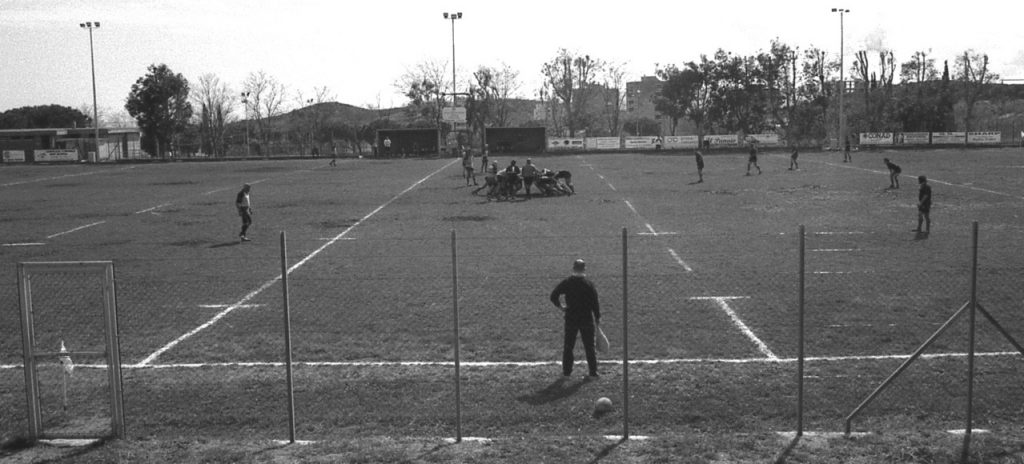
Modern rugby as we know it started in Warwickshire in 1823. According to the legendary anecdote, a young boy by the name of William Webb Ellis picked up a football in his hands and ran forward with it. Fast forward almost 200 years and rugby is among the most popular sports worldwide.
While there are many variants of rugby, for the purpose of this article, we will focus on the categories known as Rugby Union and Rugby League. The two are very similar, with a few key differentiators.
For instance, Union is played with 15 players on each team, while League teams consist of 13 aside. Rugby League is often considered the more physically gruelling and spectator-friendly of the two as it was designed to promote faster gameplay.
The Rise of American Football
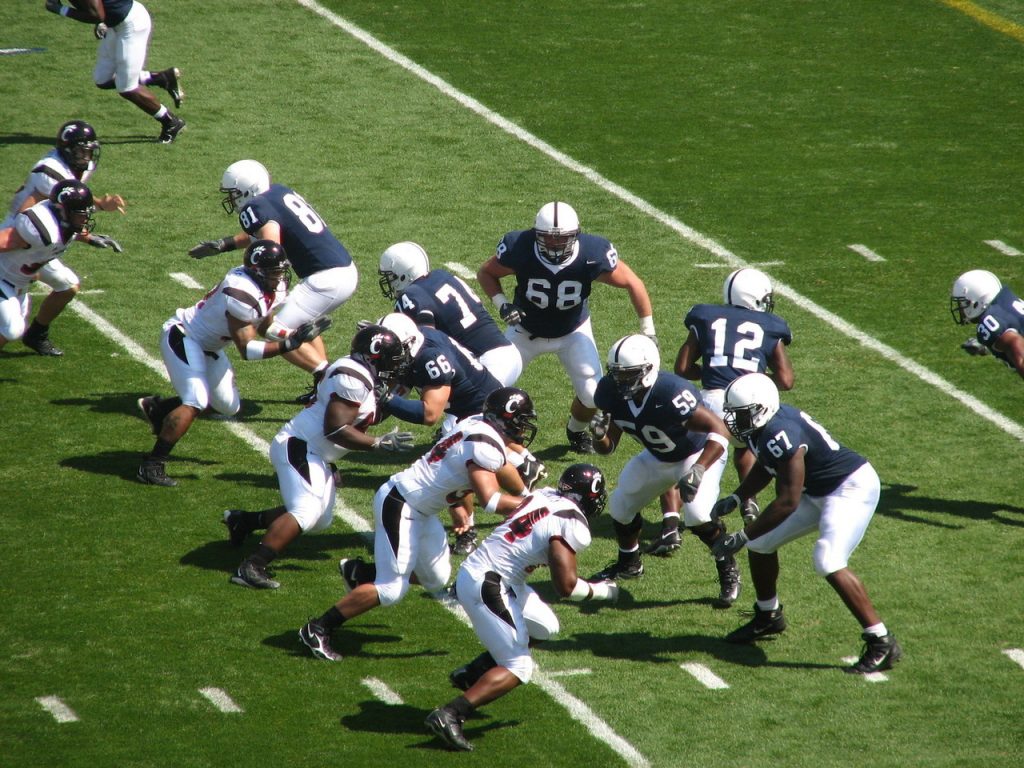
American football is a relatively new sport; it was invented in the 19th century. Anyone that has even seen a game or simply held an American football can deduce that this sport was derived (at least partially) from rugby. The first college American football game was played in 1869. However, the basic rules of modern American football were not invented until the mid 1880s by Walter Camp, a renowned Yale University rugby player.
Today, American footballers wear about 10 kgs of protective gear. This includes shoulder pads, a helmet, and lower body protection. The team’s quarterback is the most important player as he is in charge of throwing (forward) passes to the receivers.
In rugby, you are only allowed to pass the ball backwards, and protection is usually not worn (some players wear lightweight shoulder pads though).
And if you think a scrum cap offers any protection (aside from a feeble attempt to prevent cauliflower ears), believe it when we say you’d be better off growing an afro like Colin Charvis!
Head to Head Comparison

American footballers are often cited as being the toughest athletes, but it’s time to let the numbers do the talking.
Below, we have collected information on five different categories in order to compare them head to heard and declare an ultimate winner.
Size

On face value this seems like an easy ‘win’, for American football, right?
Some players in American football have absolutely huge size, with some players in excess of 300lbs. So it is easy to say that the biggest guys in football are probably going to be heavier than in rugby… but what is interesting is that when you look across different positions the size difference in terms of both height and weight is actually pretty similar, at least that’s what the available research tells us comparing elite rugby players with top-level collegiate football players.
In a New Zealand Super Rugby team with an average age of around 26 years, the average height was 187.6cm with a weight of 108kg. Football players were found to be 186cm and also 108kg but with a much greater variation in body weight.
So, although there are more extreme body sizes in American football, overall the size differences do tend to even out and Rugby Union players may tend to be a little taller on average in this admittedly small sample.

In Rugby league, due to less need for specialist body types for line outs or scrummaging, and an increase in demand for overall fitness across the park, they tend to be on average a little shorter and 8-10kg lighter from what we can piece together from the research… it appears that size comes with specific benefits and costs that are unique to each sport and that’s what we’re going to dig into next.
Result: Draw
We have to give this one a draw… just… why just? Well, because the average college football player still has some potential growing to do being several years younger than their rugby counterparts.
Speed and Strength

Figuring out which athletes run fastest can be a bit tricky. While maximum speed is a good indicator, we should also keep in mind that American football players wear a hefty layer of padding.
The best way to compare the two is to take stats from the NFL training combine, where players carry out a series of timed drills without any padding. For comparison purposes, we will use the speed stats from Jarryd Hayne, Australian rugby league superstar that tried his luck in the NFL back in 2015.
Wish they did more of these races!
The top speed recorded at the NFL combine for a 40-yard dash (36.6 meters) was 4.31 seconds in 2016.
On the other hand, Hayne ran the same distance in 4.53 seconds during his 2015 stint with the 49ers, which is also extremely fast.
Taking a wider view of speed across all positions, research on elite level rugby union players had a 40m (around 40 yard) time on average around 5.3 seconds. Measurements at the NCAA division 1 level, the highest level of college American football, across all positions was 4.74 seconds!
Now, these tests were likely done under slightly different conditions but, being half a second faster on average demonstrates American footballers seem to have the upper hand in this category, with some players running at speeds of 22 mph while wearing their protective gear.
This is unsurprising as we would expect the demands of the game, shorter bursts of intense activity and the increased focus on strength, speed and power compared to rugby players who also have to spend much of their time also developing their endurance and a wider range of technical skills to be successful in the sport.
This means that American football players tend to be stronger. This is highlighted in testing of NCAA division 1 athletes who had an average bench press of 160kg and squat of 235kg. This is significantly higher than recorded in an elite rugby team who had an average bench of ~140kg and squat of 190kg….
Again, we cannot know exactly how comparable the testing conditions were, but still considering the NCAA players were still not at their physical peak, this does point that in terms of strength and speed American Football is the winner.
Winner: American Football
Mental Fatigue & Endurance
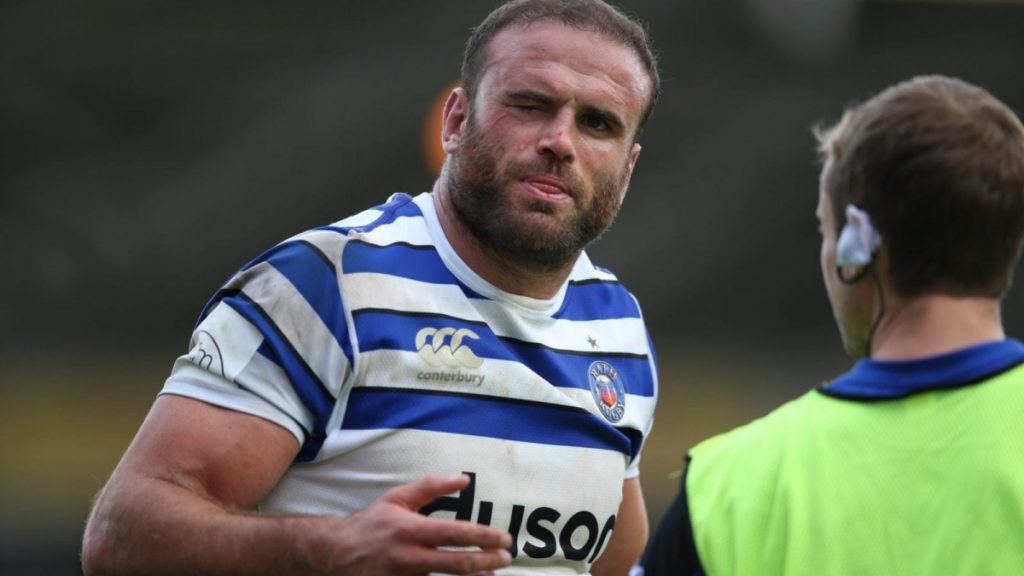
When measuring toughness, it’s not all about the big hits and speed. One must look at how hard the game is to play and how much mental strength, stamina and endurance comes into play.
On average, rugby union players cover around 6 miles per game.
On average, American football players only run around 1 mile per game and they only actually played for an average of 11 minutes whilst rugby players play for a full 80 minutes.
That’s a HUGE difference.
Rugby players run more, hit more and have to be mentally switched on for 69 more minutes than American Football players.
Rugby players don’t have the luxury of being able to stop the play each breakdown, they must get back up, get back in line, make that last-ditch tackle, cover that kick over the top etc.
It’s a whole different game when you have to combine strength, speed, power and stamina. This is why Rugby wins this section by far.
Picture this scenario (it happens frequently)
It’s the last 5 minutes and the opposition have just thumped a monster kick downfield, it’s a footrace. The ball lands in your 22 and the opposition wins it.
You make that last-ditch tackle and get back on your feet to try and win the ball only to be smashed back by the opposition forwards clearing the ruck, they play the ball fast.
You HAVE to get up and get in line only to be lined up with their 120kg battering ram of a prop, another big hit goes in.
You’re now on your try line defending attack after attack. You’ve had no chance for a breather or to think.
Your body is on the line until the final whistle.
Scenarios like the above happen often in rugby, especially at the top international games. Teams defending until the death on their try-line and it makes for great entertainment. With American football players only playing on average 11 minutes of total game time, this makes it an easy win for Rugby.
VO2max is a measure on endurance performance and relates to how effectively the body can use oxygen to produce energy. This is a solid measure of endurance capacity. Professional rugby players of both codes demonstrate a VO2max commonly over 50ml/kg/minute, with Rugby league tending to be closer to the mid-fifties. Again, unsurprising due to the difference in demands of the game and size of the players.
Data for VO2 max in American football players is hard to find, especially data that is useful in making solid comparisons. Despite the obvious game demand differences, some American Footballers have demonstrated comparable scores to rugby, but on average they do tend to struggle to hit the same heights as rugby across all positions which is again unsurprising.
Winner: Rugby
Tackle G-Force
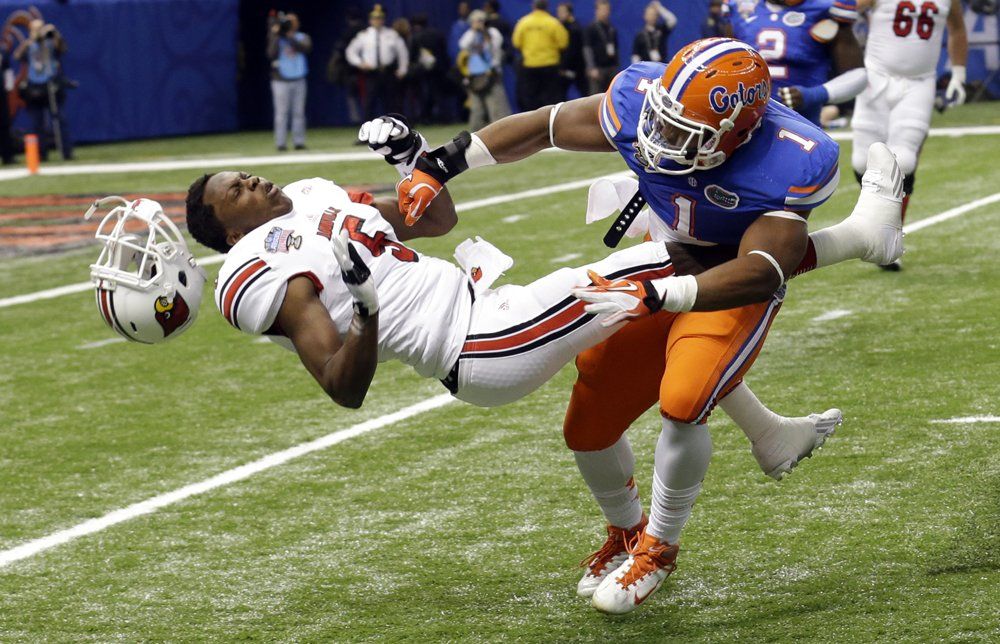
Both rugby and American football are known for big hits and jaw-dropping tackles, but which athletes endure the hardest hits? To get a better idea, we’ll go over some basic concepts.
You’ve probably already heard of g-force in both rugby and American football. This measurement can be described as a type of acceleration that causes the accelerating object to experience pressure acting in the opposite direction. The force is measured in units called gs. One g is equal to the force of gravity on Earth’s surface, which is 9.8 meters per second per second.
What you need to know is that gs represent the impact felt by an athlete. To put it in perspective, a high-speed roller coaster can exert anywhere between 3 and 6 gs on your body. But how does this compare to the force felt by these athletes?
There are many elements that impact the force of a tackle. Rugby players can experience hits with more than 10 gs of strength multiple times during a game. On the other hand, American footballers may experience an average tackle force of more than 25 gs, but with far more padding.
It’s clear that American Football players take more of a hit in terms of G force but it would be interesting to know how much the padding absorbs and to compare with Rugby. Overall, American Football takes this.
Winner: American Football
Total Tackles Per Game and Injury Risk
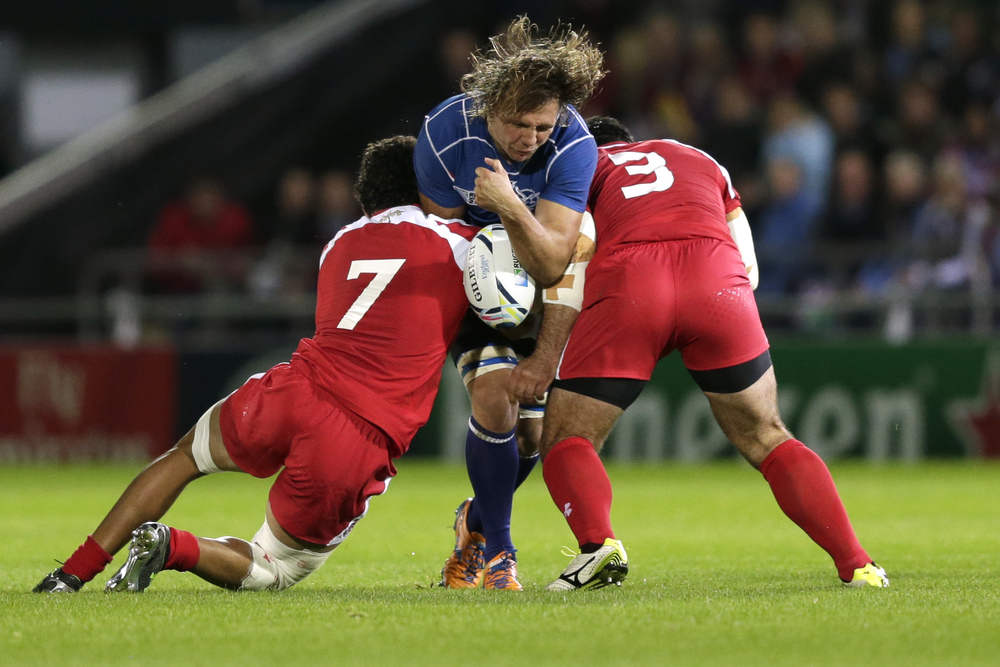
While the destructive force of both rugby and American football tackles can cause some serious damage, we also want to look at the number of tackles in a game.
In order to compare them accurately, let’s take a look at the average number of tackles in an NFL game during the 2016 season. Jerrell Freeman from the Chicago Bears led the league with just over seven tackles per game.
Rugby players such as Robbie Henshaw can tackle 10 times or more in a game, which he did in Ireland’s thrilling victory over France in the first fixture of the 6 nations in 2018.
This gives rugby another point, especially if you consider the protective gear American footballers have.
Note: There are also more collisions in rugby such as rucks, mauls and scrums. This is also true for American Football as there are many blockers but overall there would be more tackles and hits per game across the board in Rugby due to the continuous play for 40 minutes each half and every player getting involved in some kind of tackle/hits/collisions.
In terms of contact, then we can’t ignore injury risk. Direct comparison between sports is difficult due to differences in playing time and the severity of injuries that take place.
Reports have shown that injury risk in the NFL is ~65 per 1000 athlete exposures, with exposure being one practice or game. Injury rates in professional rugby are reported as 81 per 1000 player hours in games.
1000 player hours would be around 750 games… so to compare this to American football suggests injury in rugby games is more likely to occur. More fatigue, plus more contacts equal more chance of injury even if each individual collision may not be as great, or the risk per contact being lower.
We also need to consider the type of severe injury. The long term impact of head injuries have been well documented in American football, and increasingly rugby, with rule changes reflecting this in both sports over the last few years.
With these things considered to decide the difference in danger and injury factor between sports is difficult. But in this round, due to the repeated nature of the rugby collisions and the impact of cumulative fatigue and injury risk, we have to say that in the current form of both games, rugby is hardest overall on the body…. Whether you can truly call this ‘winning’ is obviously put in the context of player health and well-being and it is encouraging to see both sports increasingly concerned with player wellbeing.
Winner: Rugby
Declaring a Winner

It’s a draw points-wise….but a winner must be picked. Due to the Stamina and continuous play of rugby, we’ll have to go with Rugby being the tougher sport overall.
AF can have the biggest hits and fastest players but when it comes down to it, rugby is the toughest sport in the world.
There’s no doubt that NFL players are elite athletes but the stop-start nature of the game vs the 80 minutes of intensity in rugby is not comparable, even if they do on paper put in bigger hits in the games.
But in reality, who really cares?
Both sports hit hard and are made up of the best athletes in the world.
What really matters is expressing your love for your sport and rocking some elite level gear.
That’s where we step in with the best fitting tees and rugby shorts on the market. Designed for the rugby physique.
Get 3 for 2 on our shorts by using the code: ‘3for2‘


SHOP NOW
References
1. A Meta-Analysis of Injuries in Senior Men’s Professional Rugby Union Sports Medicine volume 43, pages r1043–1055(2013) 2. The impact of tackle football injuries on the American healthcare system with a neurological focus PLoS One. 2018; 13(5): e0195827 3. COMPARISON OF SELECTED PHYSICAL FITNESS AND PERFORMANCE VARIABLES BETWEEN NCAA DIVISION I AND II FOOTBALL PLAYERS GARSTECKI MARCUS A.; LATIN, RICHARD W.; CUPPETT, MARCHELL M. 4. Journal of Strength and Conditioning Research: May 2004 - p 292-297 5. Physical and Fitness Characteristics of Elite Professional Rugby Union Players Sports 2020, 8, 85
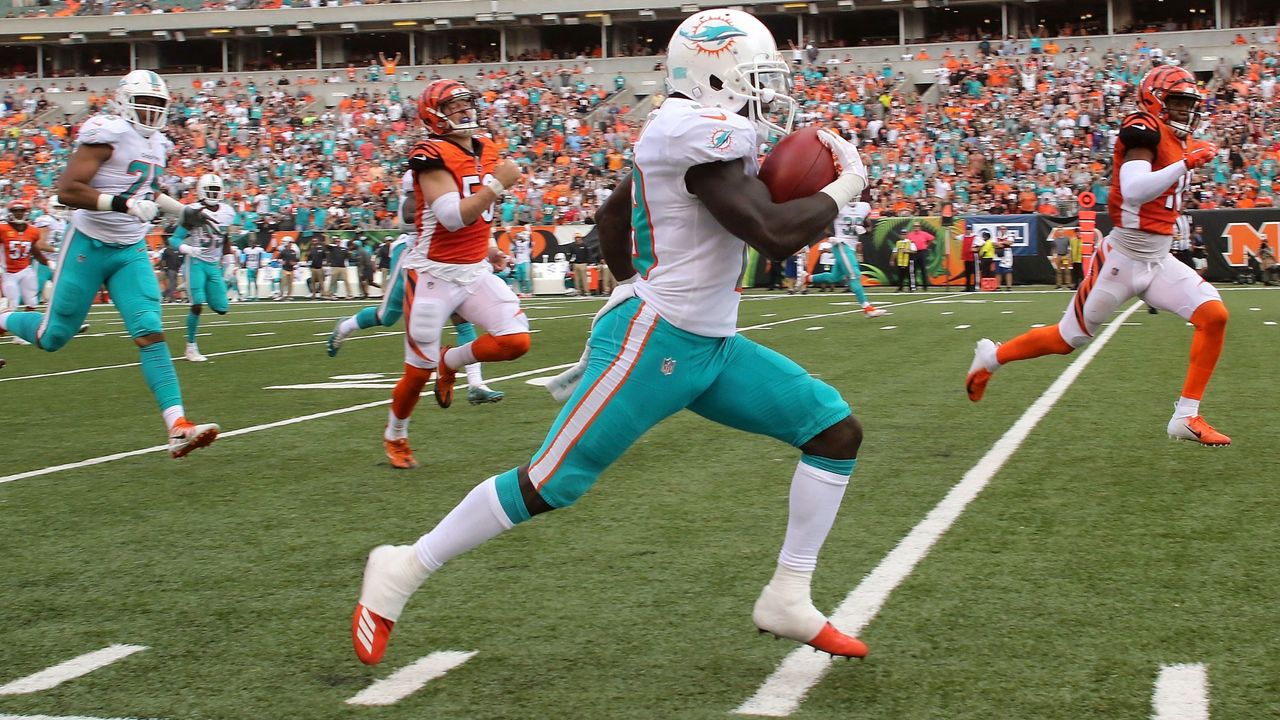
RugbyWrapUp
4th May 2018 at 11:21 amThere are some things that aren’t accounted for here. The tackle ends the play in American football, which is followed by a whistle. Bigger men specializing in a single task, that can go out for a breather and come back in fresh translates into multiple harsh impacts each play. A large, rested specialist, whose only mission is to stop the ball-carrier, is not to be taken lightly. Getting hit on the knee or by one of these specialists, often weighing more than the heaviest of rugby players, is not nearly the same as a taxed rugger sans pads, rolling and prepping for the continuation of play.
Jarred Hayne is also an exception to the rule for ruggers, whereas an NFL team won’t look at a running back, defensive back or receiver unless they meet certain speed requirements.
These sports are difficult, no doubt. But coming from a background of playing both, it’s not as cut and dry as this interesting comparison portrays.